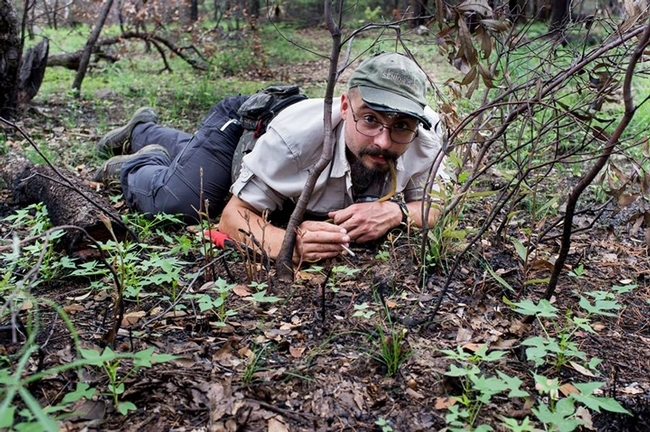- Author: Kathy Keatley Garvey
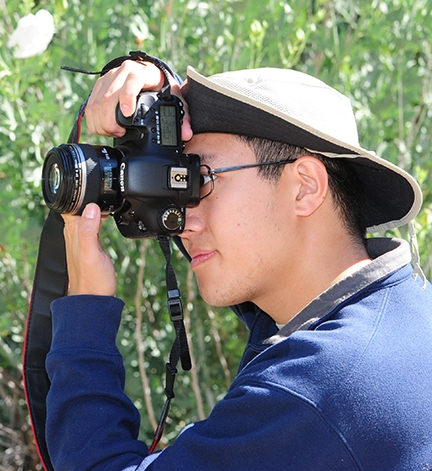
The event takes place May 12-15 in Austin and will be taught by noted insect photographers/entomologists Alex Wild, Piotr Naskrecki and John Abbott. (See information on instructors.)
"BugShot courses are designed to help you improve your macro photography technique in the field and in the studio, regardless of your equipment or experience," the organizers say. It covers, among other topics:
- Macro-and microphotography equipment
- Composition
- Lighting and flash
- Working with live insects
- Introduction to insect biology (track 1) or Introduction to photography (track 2)
- Special techniques: focus-stacking, time-lapse and video
- Digital asset management and workflow
- Field sessions in beautiful natural habitats
- Evening photo-sharing presentations
- Photography in social media
Who should attend BugShot workshops?
- Entomologists who aspire to improve their photographic skills for work or pleasure
- Photographers who wish to learn arthropod- specific techniques
- Naturalists, beekeepers and gardeners who enjoy the little things
- Bug bloggers, social media users, and BugGuide.net contributors who'd like to spice up their online imagery
We attended BugShot Hastings 2015 at the Hastings Natural History Preserve in the Carmel Valley last May. Operated by UC Berkeley, Hastings is a biological field station with much to offer and much to photograph. We fanned out to capture images of everything from bumble bees to honey bees to ants. The instructors-- Texas-based Alex Wild and John Abbott and Oregon-based Thomas Shahan--not only offered instructions and fielded questions but each delivered an evening program--Wild on ants (he received his doctorate in entomology from UC Davis with ant guru/professor Phil Ward; Abbott on dragonflies, and Shahan on jumping spiders.
For BugShot Austin, prices range from $675 to $750. To register or learn more about it, access the website or contact Kendra Abbott at kendra@abbottnature.com with questions.
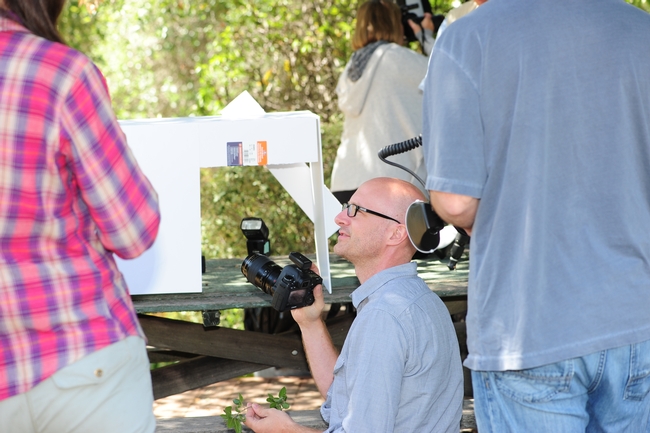
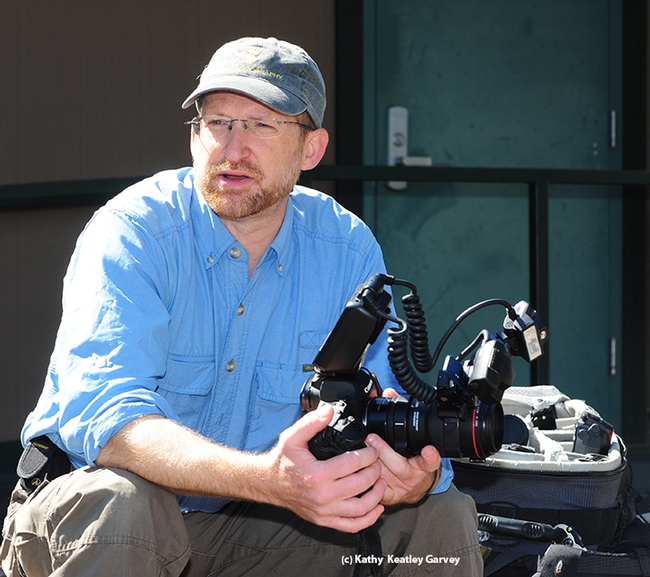
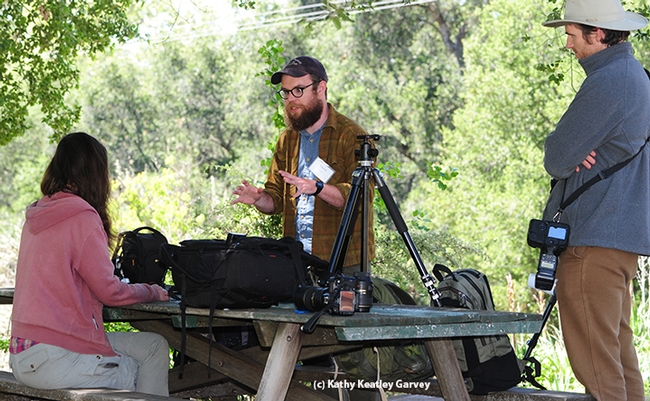

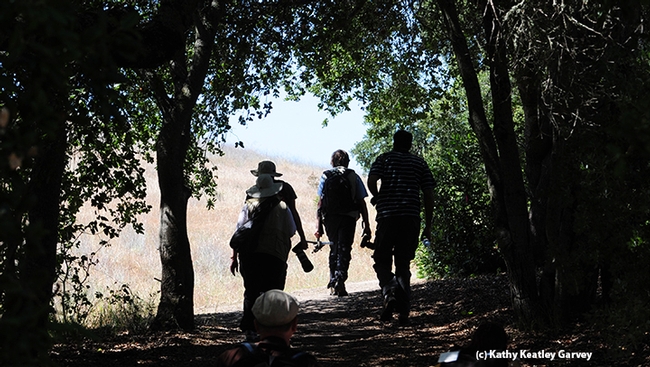
- Author: Kathy Keatley Garvey
We love looking at insect images.
Drum roll...the winning images for the Entomological Society of America's Photo Salon, a global competition, have just been announced. They will be shown at the ESA's meeting, Nov. 15-18 in Minneapolis, Minn. (The ESA theme this year is "Synergy in Science: Partnering for Solutions.")
You can see the list of winners and their images here: http://www.peoriacameraclub.com/Steve/Html/sect_1.htm
You'll see the best of show, a stunning butterfly image taken in Croatia. You'll see pests, prey, and predators. You'll see insects having a "happy meal." You'll see bug porn, or insects love caught in the act of reproducing more of the critters we love to shoot. You'll see insects you've never seen before--and probably will never see again.
They're spectacular. They're awe-inspiring. They're amazing.
As an aside, two of my photos were selected for the Photo Salon: One is of a bee fly that I titled "Pollen Power" and the other of two praying mantids ("Giddy Up").
Next year, you enter! Track that robber fly, follow that moth, and dash after that Blue Dasher. And don't forget the spiders. They're not insects, but arthropod images are also welcome in the Photo Salon competition.
If you want to learn more about macro photography, check out the Bug Shot Macro workshops at http://bugshot.net/. The instructors include noted insect photographers:
Alex Wild
John Abbott
Thomas Shahan
Piotr Naskrecki
Nicky Bay
We attended the four-day workshop May 7-10, 2015 at Hastings Reserve, a biological field station owned and operated by the University of California, Berkeley. Texas-based Alex Wild and John Abbott and Oregon-based Thomas Shahan served as the instructors and shared their knowledge and research. By the way, Wild received his doctorate in entomology from UC Davis and recently moved from Illinois to be the curator of entomology in the College of Natural Sciences, University of Austin. Wild specializes in ants; Abbott, dragonflies; and Shahan, jumping spiders. But they, of course, focus on other arthropods, too.
It was an incredible four days. More will come.
Ready, set, focus! Oh, no, where did that yellow-faced bumble bee go?
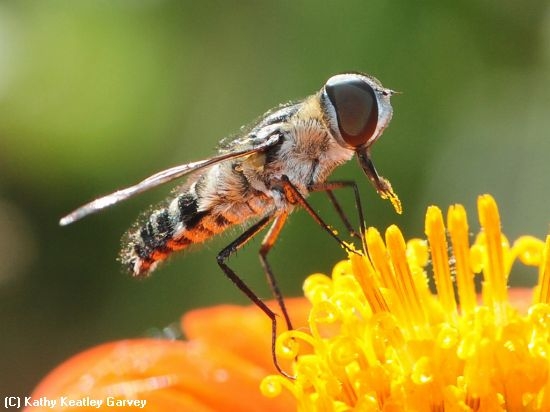
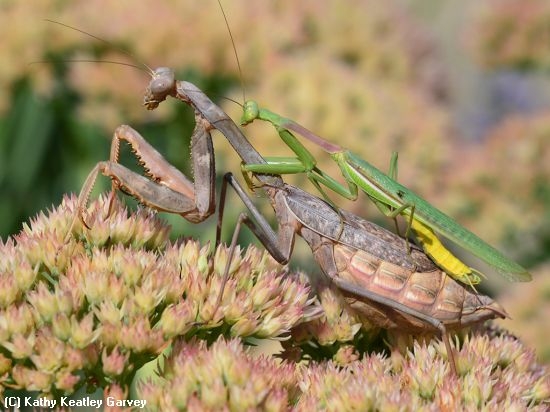
- Author: Kathy Keatley Garvey
John "Jack" Longino knows his ants.

Longino, known by his students as "The Astonishing Ant Man," will present a seminar to the UC Davis Department of Entomology and Nematology from 12:10 to 1 p.m., Wednesday, May 27 in 122 Briggs Hall, Kleiber Hall Drive.
His topic: "Project ADMAC or Ant Diversity of the Mesoamerican Corridor."
Longino, who received his bachelor's degree in zoology, with distinction, in 1978 from Duke University, and his doctorate in zoology in 1984 from the University of Texas, Austin, traces his fascination with insects back to his childhood. He developed an interest in ecology and the desire to explain patterns of diversity, so "I settled on ants as an ecologically dominant group of insects worthy of study."
"As it became clear that I was living during a time of enormous biotic change caused by human activities, I developed a strong conviction that it was important not only to understand patterns of diversity but to document it in detail for this time in history. I divide my time between two research fields: taxonomy and ecology. On the taxonomy side, I have coordinated large-scale inventories of Neotropical insect biodiversity, I discover and describe new species of ants, and I further refine our understanding of species ranges and morphological variability. I make use of advanced imaging technology, specimen-level databases, and Web-dissemination to make biodiversity data available to the widest audiences."
"On the ecology side, I use quantitative inventory techniques that allow analysis of diversity patterns. I am interested in how species are distributed on tropical mountainsides, what ecological factors explain the elevational range limits of species, and how species might respond to climate change."
Ant specialist Phil Ward, UC Davis professor of entomology (and also known as "the ultimate ant man") will introduce and host Longino.
What is the MesoAmerican corridor? It's a zone of complex tectonic history, episodic biotic interchange between large continents, and frequent mountain-building," Longino says. "Ants blanket this landscape, forming a tapestry of fine-scale habitat specialization and geographic replacement. Many taxonomists have contributed to the description of species in the region and this fundamental 'biodiversity mapping' continues apace. Project ADMAC (Ant Diversity of the MesoAmerican Corridor) combines morphological analysis with large-scale DNA sequencing (targeted enrichment of Ultra-Conserved Elements) to reveal the evolutionary history and geographic structure of ant species in MesoAmerica."
"Ants show very strong patterns of elevational specialization and geographic turnover, and Project ADMAC will address questions of (1) how and when montane species evolve, (2) the effects of differing mountain ages on communities, (3) the impact of lowland barriers on montane ant dispersal, and (4) whether ants experienced a major biotic interchange on the closure of the Panamanian isthmus."
National Public Radio interviewed Longino in August of 2013 on his research. He told NPR he started out collecting stamps in his childhood, but that bored him. He decided to "get small."
"If you're shopping for a home entertainment system," he says, "you can't do better than a good dissecting microscope," he said. At the time of the NPR interview, Longino had just published two papers describing 33 new species of ants, bringing his personal "new species" total to 131, NPR reported. In the article, Longino described himself as "average" among entomologists, pointing out that some entomologists have described thousands of new species.
So, if you're like Longino, if you had a choice between a home entertainment system and a good dissecting microscope, the winner--hands down--would be the dissecting microscope.
And if you want to know about ants, you can download Dr. Eleanor's Book of Common Ants for free at http://ants.yourwildlife.org/dr-eleanors-book-of-common-ants/. It's the work of science writer Eleanor Spicer Rice, noted insect photographer Alex Wild, and designer Neil McCoy.
Be sure to check out Alex Wild's Myrmecos blog at http://www.myrmecos.net/ for amazing ant photos and educational information. He holds a doctorate in entomology from UC Davis (major professor Phil Ward) and is now curator of Entomology in the College of Natural Sciences, University of Austin--the university where Longino received his doctorate.
All in the family...the ant family...Formicidae.
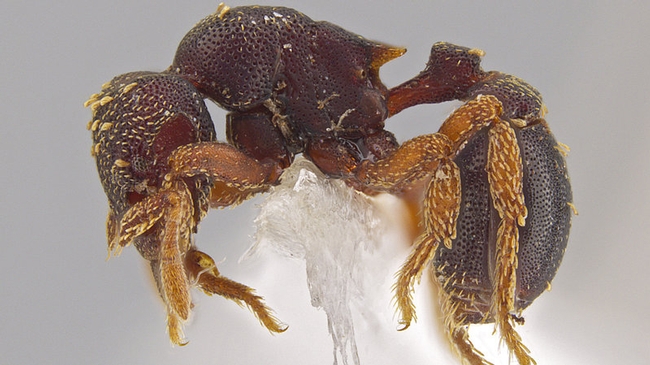
- Author: Kathy Keatley Garvey
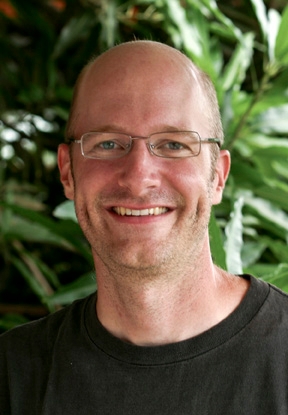
Images of arthropods in the public domain that you can download.
Free. For. All.
Noted insect photographer/entomologist Alex Wild, curator of entomology for the Biodiversity Collections, University of Texas at Austin, has launched the "Insects Unlocked" Project, aiming for $8000 over a month-long campaign.
Wild, who received his doctorate in entomology in 2005 from the University of California, Davis, is a professional insect photographer extraordinaire. And, under his mentorship, a team of students in UT's Insect Image Lab "will learn the art and artistry of digital microphotography while capturing images of Texas's smallest wildlife," he explains. They will "create thousands of beautiful, unique, and informative visual works for release into the public domain. The resulting image collection will be open for anyone to use, free of the constraints of traditional copyright."
"Where can you use Insects Unlocked's images?" he asks. "Anywhere you'd like! Web pages, magazine covers, books, billboards, blogs, t-shirts, scientific papers, apps, social media, coffee mug designs, classroom presentations, Wikipedia, and more. Ours are public works and can be used for anything, including commercialization, without the need for advance permission or even credit."
Today he posted on his Facebook page: "I am pleased to report that the Insects Unlocked project to crowd-fund public domain arthropod images is more than 60% funded, not even a week into a month-long campaign. Your support has been generous and unexpected--thanks so much! To celebrate, over the weekend I created some new public domain images for the project, including this 60 image focus-stack of a Brachygastra mellifica Mexican honey wasp (see below). If you'd like to support more images like this, consider contributing at the link: https://hornraiser.utexas.edu/proj…/54e79bbc14bdf7205ddd5ab7
Basically, donations to the program will support several undergraduate students as they learn the UT imaging system and receive training in scientific imaging, entomology, and outreach. As Wild says, "Donations will also improve our processing computers, add cameras and lighting rigs for field use, and offset the costs of web hosting. Our team will start in the summer of 2015, using the 2015-16 academic cycle as a pilot while we evaluate the feasibility of a long term publicly-funded program."
How many images will be in the public domain? "The amount and type of images we produce is proportional to the level of support we receive," Wild says. "Our image lab is located inside the UT insect collection, and we begin with high-magnification captures of curated material, as well as live field photography at the adjoining Brackenridge Field Laboratory. Should we exceed our funding goal, the Insects Unlocked team may be able to mount expeditions to diverse parts of Texas to photograph and video more live insect behavior in the field.
Wild, who studied with major professor/ant specialist Phil Ward at UC Davis, captures amazing images of insects. His work has been published in scientific journals, books, magazines, and newspapers, including the New York Times, National Geographic and Scientific American. He returned to the UC Davis campus in October 2011 to deliver a presentation on "How to Take Better Insect Photographs." His presentation is the most popular of all the UCTV seminar videos posted by the UC Davis Department of Entomology and Nematology. Watch it online.
Wild is enjoying his new position as curator. The collection contains about 500,000 pinned and 500,000 ethanol specimens. "We have one of the world's largest collections of cave arthropods," he said.
You can follow the project on Twitter at @InsectsUnlocked, and view and download the images on Flickr. Wild writes about the project on his Myremocs blog and in his Scientific American blog.
Alex Wild appreciates the generosity of the 75 donors (as of today). But he, too, is generous--exceedingly generous!--with his time and talents that will benefit us all.
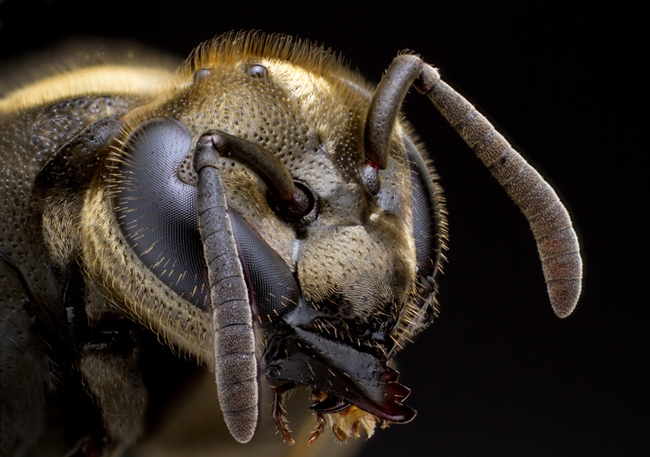
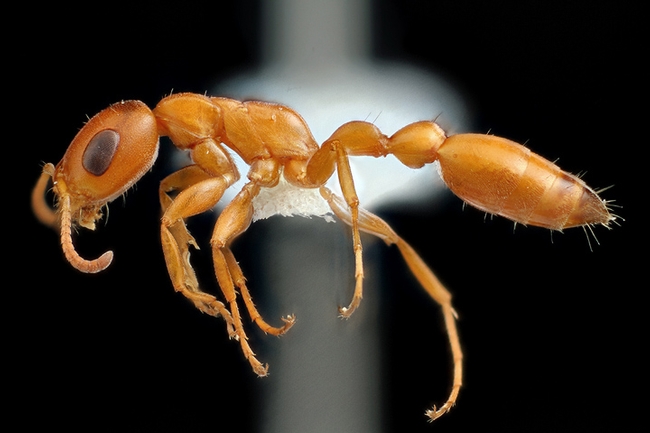
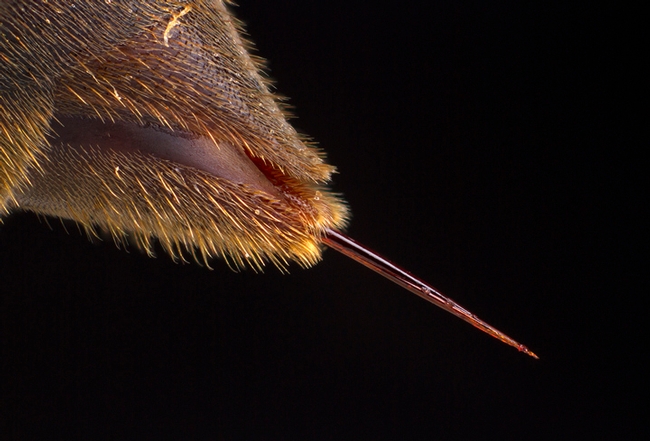
- Author: Kathy Keatley Garvey
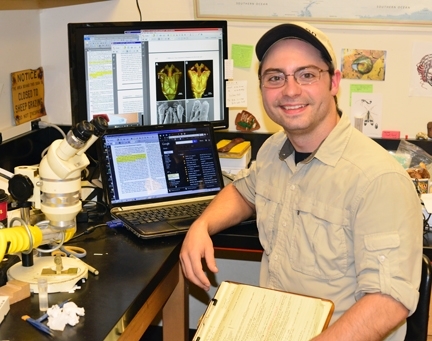
It was Dangerfield (1921-2004), you know, who coined the catchphrase, "I don't get no respect."
Male ants don't either, says myrmecologist (ant reaseacher) Brendon Boudinot, a doctoral student in Phil Ward's Department of Entomology and Nematology lab, University of California, Davis.
Boudinot, who recently won a first-place President's Award for his presentation on “Revising Our Vision of Ant Biodiversity: Male Ants of the New World” at the 2014 Entomological Society of America meeting in Portland, Ore., is passionate about ants, particularly male ants.
Male ants get little respect or attention, said Boudinot, who aims to raise public awareness of their importance and demystify them through his scientific research.
“There are about 12,800 living species of ants described to date,” explained Boudinot, who enrolled in the UC Davis doctoral program after receiving his bachelor's degree at Evergreen State College, Olympia, Wash., in 2012. “Males are known for only 27 percent of these species, and no identification resource exists for identifying male ants for most bioregions.”
Addressing this concern, he provided the first male-based identification keys to subfamily and genus level for the New World. The keys cover 13 of the 16 subfamilies and 151 of the 324 genera. This, coupled with a global male-based key to all 16 ant subfamilies he submitted in November, will enable male ants to be identified by genus in the New World---encompassing North, Central, and South America---for the first time.
“This will facilitate the use of male ants in evolutionary, ecological, and taxonomic studies,” Boudinot said. “Moreover, it encourages a shift in the focus of myrmecology, the study of ants, by allowing male-specific collecting methods to be used and will encourage future workers to include males in their research.”
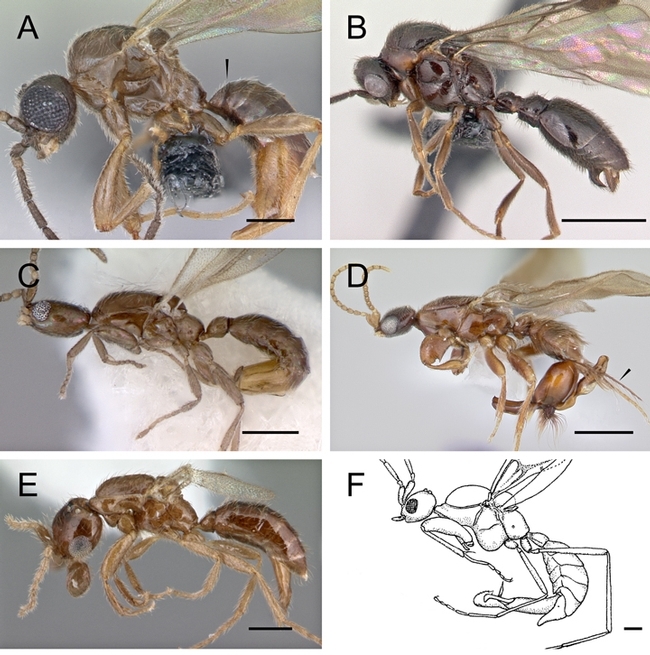
As for telling the difference between a male and a female ant, that's not easy, even for many ant researchers, Boudinot acknowledged. “Males and reproductive females, queens, usually have wings and look different from workers. Males are usually differentiated from females by having slightly different morphology. Besides having complex and strange genitalia, male ants also tend to have one more antennal segment, larger eyes, and in general look more ‘waspy.' "
The genitalia of male ants are fascinating, he said. “Think of a Leatherman or Swiss Army knife which has paired muscular claspers, graspers, and sawblades. Male ants have evolved winglessness and worker-like morphology at least five times in the ants, which has historically led to the accidental description of these wingless males as new species. This is a weird phenomenon which I will be focusing on for a chapter of my dissertation. Why have they evolved winglessness? What are the evolutionary patterns of skeletomuscular reduction? Are there trade-offs for a colony when they lose the ability to produce dispersing males? Anyway, this should be fun.”
Boudinot noted that the inaccurate portrayals of ants in Hollywood movies lead to lifelong misinterpretations. “There is a perception that there are two kinds of ants: red ants and black ants--and sometimes yellow ants--and that the workers of ants include both sexes, as in the Disney movies A Bug's Life and Antz,” Boudinot said. “Really, ants are incredibly diverse---which is why I am fascinated with them in part.”
Reproductory misinformation abounds in “A Bug's Life,” the 1998 American computer-animated comedy adventure film, Boudinot said. All worker ants are female and sterile, but Princess Atta marries a male, Flik. “Flik and Princess Atta wouldn't have married, and if they did, Flik wouldn't be the dad as chances are she, as a worker, would be able to lay only unfertilized eggs which would become clonal males.”
If there's one thing that Boudinot wants youngsters of today to know about ants, it's this: “There are remarkable things to discover everywhere, and unanswered questions abound. Discovery is borne out of observation, and there is so much to observe in any single square meter of Earth's surface. I like ants in this respect because they are everywhere! In tropical rainforests ants and termites (another group of social insects) may make up to one-third of the total animal biomass, dwarfing that of vertebrates such as panthers, birds, and amphibians. There are about 90 species of ants in Sonoma, Napa, Yolo, and Sacramento counties alone, including fungus-cultivating ants!”
Boudinot encourages people to check out AntWeb.org. “This website is a digital database of thousands and thousands of species of ants, many of which look like they are extraterrestrials or are strange beasts out of nightmares,” he said, adding “Okay, and some of which are just fluffy and adorable.”
